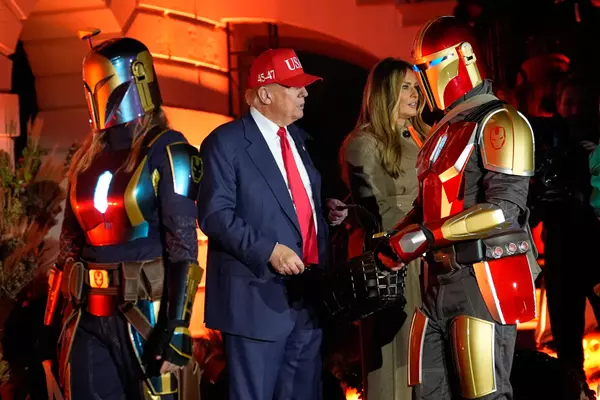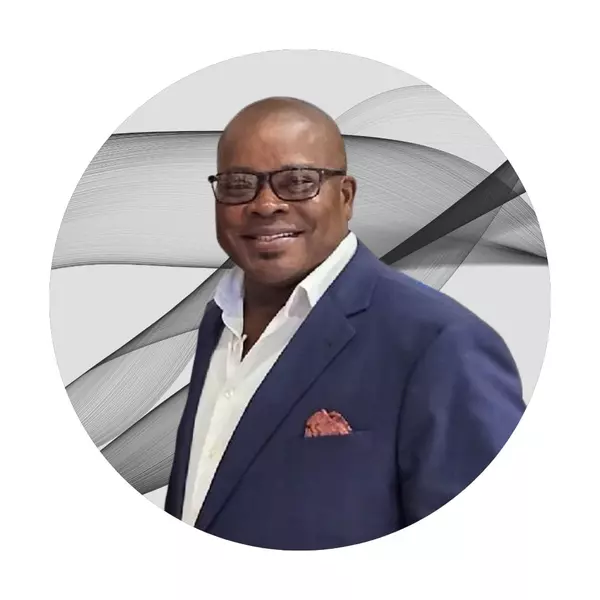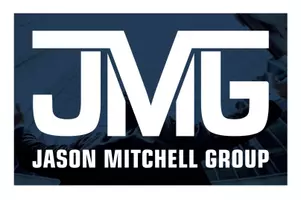Padres head into the offseason with a need to power up for next October
The Padres consider themselves an annual playoff fixture.
And that is not enough.
“We’re not done until we win a World Series championship,” CEO Erik Greupner said several times over the past few weeks.
And so, even as the current postseason rolls on without them following their loss to the Cubs in the Wild Card Series, it is fair to look ahead and wonder what it will take for the organization to give itself a real opportunity to hold a parade rather than have another October end with a whisper.
The Padres have won 183 games over the past two regular seasons, the most in franchise history in successive campaigns.
They are one of seven teams to have made the postseason the past two years and one of nine teams to have made the playoffs in at least four of the past six years.
The Padres have crucially figured out how to win enough over six months. That doesn’t guarantee they will every year, but it means they have forged a philosophy and a culture and have amassed the talent to perennially be legitimate contenders for one of six playoff spots available in the National League.
That must be appreciated.
But now what?
The Padres’ decision-makers will meet in the coming weeks to go over many things, including discussions regarding an extension for president of baseball operations A.J. Preller and talks about the status of members of the coaching staff. The baseball operations department, which already has a good idea of what needs to be done, will break down the season’s highs and lows and forge a plan. Shortly after the World Series ends, the organization and some players will make decisions regarding contract options and other housekeeping items.
November usually brings some level of certainty regarding the budget for the following year.
Then, the team building begins anew.
More than four months before spring training, the Padres appear to have more clarity about their lineup for 2026 than they have had going into any of the six seasons since their run of relevance began in 2020.
But there are undoubtedly improvements to be made.

Start with slug
The Major League Baseball playoffs are more unpredictable than any postseason in sports.
That’s especially true this year. There was seemingly no dominant team in the major leagues in 2025, and that made it plausible that the Padres, particularly with their topflight bullpen, had as good a chance as any to win it all.
But a bullpen needs a lead in order to make a difference. And it is difficult to build a lead when you score five runs over three games.
That part was actually fairly predictable when it came to assessing the Padres, who ranked 28th in home runs (last among the 12 playoff teams) and 18th in runs scored (11th among playoff teams) during the regular season.
Their demise this past week was forecast over a season of slugless nights.
“Home runs win in the postseason,” one veteran player said inside the quiet visiting clubhouse at Wrigley Field on Thursday after the Padres’ 3-1 loss in Game 3.
Maybe it’s not quite that absolute, though it is true that none of the past five World Series champions has averaged fewer than 1.3 home runs per postseason game.
Home runs won Game 1 for the Cubs, and one homer sealed Game 2 for the Padres.
The Padres’ ability to score during the regular season without home runs was impressive. It was also a perilous formula that left them dependent on stacking quality at-bat after quality at-bat.
As difficult as it is to hit homers, it is more challenging to string together enough singles and walks to score an abundance of runs.
The Padres are going to have to look outside the organization to find some power. But they are also going to have to look within.
They have players who are supposed to hit home runs. Two of them hit one apiece in the Wild Card Series, and that was all the Padres got.
Manny Machado’s two-run blast in Game 2, his only hit in the series, gave the Padres a cushion that all but secured a 3-0 victory. Jackson Merrill’s solo home run in the ninth inning of Game 3, one of three extra-base hits he had in the series, began a rally that ended with the tying run on second base.
Fernando Tatis Jr. hit one single and walked once in 13 plate appearances over the three games.
Arguably one of the biggest downfalls for the Padres was not having Ramón Laureano, who suffered a fractured finger in the season’s final week. He hit nine home runs and nine doubles in 50 games after being acquired at the trade deadline. The team will almost certainly pick up his $6.5 million option for next season.
The Padres will hope the changes Laureano made that resulted in a rate of one home run every 18.38 at-bats, just shy of his career-best mark of one every 18.08 at-bats in 2019, stick.
Similarly, they will hope that late-season surges by Machado, Merrill and Tatis are indicative of their ability to slug more in 2026 than they did in 2025.
Machado averaged one home run every 22.78 at-bats, his worst rate since 2014. Tatis’ average of a homer every 23.76 at-bats was his worst in six big-league seasons. And at the end of a season interrupted by three stays on the injured list, Merrill finished with an average of one homer every 27.5 at-bats, nearly 4½ at-bats more between homers than in his rookie year.
Even if all four of those players achieved at or near their highest home run levels, the need to look elsewhere would be undeniable.

What can they do?
The narrative regarding the financial constraints under which Preller worked this year was equivocal at best.
The parameters under which Preller operated came about after multiple years of exorbitant spending that saddled the Padres with significant contractual obligations and, according to multiple people inside and outside the organization, exceeded sustainable levels.
Even with cuts from a high of $256 million in 2023, the Padres’ $211 million payroll this season was the ninth-highest total in Major League Baseball.
What is undeniable is that the job Preller and his staff did the past two seasons was remarkable. They not only cobbled together two playoff teams that won a total of 183 games, they set the team up to maintain financial responsibility and competitive viability in the future.
The Padres owe a lot of money over the next eight years to a pair of players who recently turned 33.
Machado ($39.09 million) and Xander Bogaerts ($25.45 million) will make a combined $64.54 million every year from 2027 through 2033. That covers their age 34 through age 40 seasons.
But that’s a fiscal pickle for another day.
The Padres’ 2026 books should be manageable.
In no small part due to moves made at the past two trade deadlines — when key players were added at little cost and with controllable futures — the Padres have rounded out their roster for the time being and should reasonably be expected to field a contending team within whatever financial boundaries that are set.
It is not known where the Padres will land with their payroll. It is difficult to guess without a clear idea on what their arbitration class will be awarded. But for now, the Padres project to be easily under $190 million with fewer holes to fill than they had a year ago.
Given ownership’s public commitment to maintain a contender by investing every dollar it brings in back into running the team and considering the Padres broke their season attendance record for a third consecutive year, there should be little question that they can find a way to add some much-needed power to their lineup and round out their starting rotation.
The lower-priced players who are staying and the higher-priced players who are leaving should put the Padres in better shape this offseason than either of the past two.
Luis Arraez, Dylan Cease and Michael King made a combined $31.75 million in 2025 in their final year of arbitration, and they are all expected to depart as free agents. Robert Suarez made $10 million last season and is due $8 million in 2026, but he is almost certainly going to exercise his option to become a free agent. Former first baseman Eric Hosmer is no longer on the books, which sheds what was a nearly $13 million commitment in 2025.
The Padres’ current commitments for next year are around $166 million for the players they have under long-term contracts plus the buyouts on options for four players. Their eight arbitration-eligible players are likely to cost somewhere around $20 million.
It is considered a virtual certainty that Suarez opts out, King declines his portion of the mutual option on his deal and the Padres do not pick up options on Elías Díaz, Kyle Hart or Tyler Wade. The buyouts on King, Hart, Díaz and Wade total $6.3 million.
There is a potential savings of $16 million looming, too, if veteran pitcher Yu Darvish decides to retire.
No one has said that is happening, but Darvish has not denied it might.

The Darvish dilemma
Should Darvish return, the Padres’ starting rotation is theoretically five deep for 2026.
Nick Pivetta will return after posting a career-best 2.87 ERA that was tied for fifth-best in the National League. Joe Musgrove, who plans to make a few appearances in a winter league as part of the final steps in his rehab from Tommy John surgery, should be full-go by the start of the season. Randy Vásquez’s spot in the rotation will be written in ink this time after he carried a 3.84 ERA over 26 starts. JP Sears will be given a chance to earn a spot at the back end.
The questions, beyond who else the Padres bring in, revolve around Darvish.
First, there is the unknown regarding whether he will continue to pitch. There has been talk for more than a year about the possibility he could retire at any time. At 39 years old and having dealt with elbow issues each of the past five seasons, Darvish has not made any assurances about completing his contract, which runs through 2028.
If Darvish does return, the Padres will have to figure out how to keep him healthy and effective. He missed the first half of the season and never was able to maintain the consistency of his delivery, which he altered to take stress off his elbow.

Another level
By all accounts and appearances, the Padres enjoy each other’s company and are united by their collective cause.
“We’ve built a culture,” manager Mike Shildt said as he stood in a hallway to the side as his players huddled around the visiting clubhouse on Thursday.
Or as Merrill put it a few minutes later:
“We’re a family,” Merrill said. “… We love everybody in here. I don’t care who you are, we’ve got your back. Every team you have is a family. I don’t care how you act, who you are — if you’re an a–hole, if you’re a nice person — if you’re on my team, you’re my teammate. I care about you more than anything. If you’re on the Padres, you’re part of the family.”
The Padres won a lot of games because they are talented and because Shildt and the coaching staff were able to indoctrinate a belief in baseball won on the margins.
They won 57% of the games they played that were decided by two or fewer runs, the fifth-best total in MLB. They came back to win 24 games in which they trailed by two or more runs, tied for most in the majors.
But for all their resilience, there are numerous people in the Padres organization who believe they can reach another level.
Multiple veterans have expressed a hope that Merrill, who will turn 23 in April, takes a step toward assuming more of a voice in the clubhouse.
Some players and others in the organization believe the Padres lack a sort of killer instinct and will to dominate that also fosters consistency.
They believe Merrill and Laureano, who was new to a veteran team, can help increase the edge.

Power play
All three outfield spots are set with Laureano, Merrill and Tatis.
That is two recent All-Stars and a guy who showed last season he might soon be one.
With Gavin Sheets as a fourth outfielder and useful in a potential platoon at designated hitter, that leaves two spots where the Padres can conceivably add a power bat: first base and DH.
There is little doubt that Bogaerts and Machado will fill those roles at some point, but it is almost certainly too early to entertain that possibility now.
It is even more inconceivable to envision the Padres entering the contractual stratosphere it would take to sign someone like Pete Alonso or even Josh Naylor.
It is possible that Preller waits to see how the team is performing and what the specific needs are at some point in the summer. That plan has worked out pretty well the past two seasons.
Until the end.
Categories
Recent Posts










GET MORE INFORMATION


